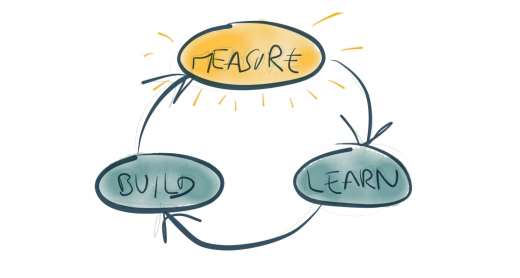
Yoav Vilner is CEO at Ranky, the startup-marketing team. He’s helping startups grow and then shares his insights regularly at Forbes, Entrepreneur, Inc, TheNextWeb, ReadWrite and VentureBeat.
Your marketing department wears many hats. Among them there’s the PPC hat, there’s the content hat (which is fit for a king), and there’s the demand generation hat – just to name a few. The demand generation hat is worn by anyone who is creating any sort of demand for your product or service.
So what exactly are these guys with the demand gen hats doing to increase demand for their products? Under the large umbrella of your demand generation strategy falls other inbound marketing strategies; blogging, conversion rate optimization, content marketing and more. Anything that’s going to create demand for your product to help your users through the sales funnel.
Here are four rules to improve upon within your demand generation strategy and tools that will help you to integrate all of your many hats.
1. Walk them through it, then measure.
Measuring all of your demand generation efforts will go a long way in telling you precisely what elements of your strategy are here to stay and which ones you’re ready to ditch. It’s important first to measure where your qualified leads are coming from, so you can invest more in those channels. The more frequently you measure, the more often you can optimize your strategy and capture more leads.
Let’s take Nissan for example, who has approximately $930 million in advertising dollars to spend across 36 different media outlets. They utilize their analytics to research how many consumers make it from the awareness portion of the funnel into the transaction phase.
Once Nissan buys the ad time for each campaign, they measure consumer attitudes every week while the ad is running by online surveys. This helps the company calculate their payback by each individual media outlet. By measuring and optimizing frequently Nissan was able to slash their per-vehicle advertising cost by 35 percent.
Once measurement is all set-up, it’s of necessity to walk them through your desired CTA’s, funnels and any type of online process designed to convert them from random readers into paying customers. For that matter, Toonimo is a user guidance tool that uses an audio-visual layer to walk users through those funnels. The platform combines voice-over scripts with graphic elements that can be personalized to different type of users.
While analytic tools will help you to optimize and make the most out of your demand generation budget; it also helps you to show to others in the company that your resources are going to good use with improvements in ROI.
2. Fight to Keep Users Onsite
For demand generation to work properly and most effectively, it’s important that your business has more than just an online presence. Even websites with outstanding content, and great presence online struggle to make money from their platforms. Demand generation addresses each individual customer’s needs to offer smart promotions in order to monetize your traffic.
To monetize traffic more effectively and have the opportunity to communicate directly with your customers keep your traffic stationed on your page, where they’re more likely to follow through with your CTA.
While many companies invest in social media campaigns to monetize their traffic, they’re essentially detracting from the main goal, which is on the webpage itself. The “onsite social networking” startup Spot.IM, launched by two serial entrepreneurs, keeps your readership in place without bouncing away. There’s no surprise that by keeping your traffic where your CTA is you’re more likely to monetize them.
3. The Golden Rule
The Golden Rule is important in every aspect of business, but particularly when we’re talking about your demand generation strategy. Demand generation requires an ongoing discussion and relationship with your customers, so if you haven’t started yet you better start treating them like the royalty that they are.
Your communication with the customers must be based on rich knowledge and hard driven data. This data is used to create personalized content and conversations with your audience. Once you know their pain points, you can begin to speak to them on a more personal level and gain their trust, which can be further developed into high quality leads.
If I could only explain to you how many of my emails get dragged directly into my trash bin every day, but I’m sure you know the feeling. Your customers want to be treated the way you want to be treated, so quit spamming them and provide them with relevant and useful information.
A couple of weeks ago I got an email from my gym, usually those too go straight to the trash. This one however, didn’t come from ‘LA Fitness’ it came from Megan Dayan, one of the instructors at the gym so I was intrigued to open it. Just in time for my new years resolution, they sent a new class schedule and extended hours. The exact kick start I needed to get into shape. They just get me. They used their timing, my location, and even the name of my instructor to boost our relationship.
Marketo uses this data driven marketing as part of their secret sauce for demand generation. With the Sales 2.0 techniques and tools they know the demand generation funnel and cycle and optimally use this information to delve deeper into customer relationships and increase your ROI.
4. Don’t automate communication – be human
Besides the fact that the email I received from Megan was extremely relevant to me at the time, the reason that I even opened it in the first place was because I saw a familiar name. To be honest, I didn’t even remember where I knew the name from at the time but I was inclined to open it because it was addressed from a personal account.
The trick here with personal emails is that you must follow up. If you don’t follow up with a personal email you may as well not have sent it out in the first place. Here, Hazel from Canva welcomes you personally to Canva with a simple and sweet message.
By responding to the email you’re assured to get a quick response from an actual person to help you. With such an influx of emails, I use a tool called Boomerang for my Gmail account to make sure I follow up with certain emails, set reminders for future me, and clear out the rest of the clutter. Although human touch can be a huge advantage, we still need a bit of help being the best humans we can be.
Since your marketing team does wear so many different hats it’s important to show the payback for each of your efforts. This not only shows others that you’re credible and bringing in your return on investment, but it also helps you manage your own assets. It can be difficult keeping track of all of your different responsibilities as a marketer, but luckily we have many tools and resources to help us manage and improve all of our efforts.
Demand generation is an important part of your overall marketing strategy and it can constantly be improved upon, so keep up with these essential tips and you can always stay on top of your A-game.
Read Next: 4 tricks for finding the best business blog topics
Get the TNW newsletter
Get the most important tech news in your inbox each week.









